 Week 1: Global Education - Theory and Issues 0 unread Topic Settings | Week 1: Global Education - Theory and Issues 0 unread Topic Settings |  View Full Description View Full Description  Hide Full Description Hide Full Description 
Third World Schooling
Since the 1950s, enrollments in
school throughout the developing world have greatly expanded. But
enrollment does not guarantee quality education—that is, the
mastery of basic knowledge and skills. This is especially so
during periods of sharp economic decline, where schools must do
more with less. Child populations are also doubling every 20 years
in many countries, increasing demand without a corresponding
increase in supply. In many cases, the conflict between
ever-rising enrollments and falling resources severely erodes
school quality. We begin the course by framing the issues bearing
upon “third world” schooling—both the causes of the problem and
the strategies being proposed for addressing them.
Discussion #1 : Third World Schooling
The urban poor are among the
worst-served groups, education wise, in the developing world. Our
task this week is to understand why. (1) Read the
materials for this week. (2) Write: In two paragraphs,
explain five (5) of the most important issues framing “basic
education in the developing [urban] world.” Provide direct
references to the readings (author, page #). (2) Then describe
what is being initiated at a global level to raise the access to
and quality of schooling. (3) Lastly, venture an opinion, based on
your reading, of how “quality basic education”
(primary/secondary education) should best relate to “training in
production skills” (technical education)? Should they be joined or
separated? Post and comment no later than Monday
morning (PST) of Week 2. Be prepared with one page with
bullet points presentation in VSee.
|
|
 Week 2: Theology/Theory of Education 0 unread Topic Settings | Week 2: Theology/Theory of Education 0 unread Topic Settings |  View Full Description View Full Description  Hide Full Description Hide Full Description
Project 2: Theology / Theories of Education
The assignment you are working on
is the following:
1. Discuss with two Christian
Educators their primary theological paradigms for educational
commitment and document in a few paragraphs.
2. Search the web for other
Christian perspectives on education. Part 5: "Helping
Children Develop Spiritually" in the assigned
text Childhood Education in the Church has a number of perspectives.
3. Try to locate Buddhist, Hindu or
Muslim rationales for religious education.
4. Try to locate rationales for
secular education. Why did the West choose secular education
structures in the 1880's? Review the articles in the menu that
relate to this issue
5. Identify two main educational
theories and theorists and reflect on their input in the light of
these Christian principles.
From all of these, integrate the
arguments for and against Christian education.
Format this in a word template,
creating boxes for key ideas, so that you end up with a useful
tool for communication to educators as to the Biblical/
theological basis for principles of teaching
Discussion
Use this forum to get this started,
write up two paragraphs on one item you have found, related to
theological foundations and one related to an educational
philosophy. Respond to other entries with some of the research
you have also found. This is an academic discussion, and requires
citations and logical responses. "Nice post" is not an
academic response, nor "I feel good about this topic"
Come to class on Monday PST with one of these to share.
|
|
 Week 3: Internship Definition / Theories of Education 0 unread Topic Settings | Week 3: Internship Definition / Theories of Education 0 unread Topic Settings |  View Full Description View Full Description  Hide Full Description Hide Full Description
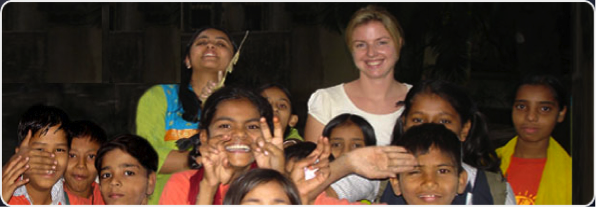
Educational Center Internship
You will select either a public or
private school or vocational school for a 40-hour internship by
the end of week 3. This internship is designed to help you
develop a mentored, experiential awareness of the educational
issues which we will read about and discuss during the course, all
the while lending support to the teachers, parents, and/or
children. Choose a school with either a preschool, or general
education (primary/secondary) or vocational training
mission. Note: If you do choose one of the many “private”
(for-profit) schools within a particular slum community, it must
meet the following two criteria: (1) be primarily funded by urban
poor student tuitions (i.e. not completely or majorly subsidized
by outside/foreign funds - all poor schools have some degree of
benefactors to survie so dependency is a flexible concept); and
(2) model social entrepreneurialism, with local school leaders
also being creative business persons. At the close of the service
term, a copy of the completed “Service-learning Agreement”, along
with a brief Service Performance Evaluation, will be sent to your
Supervisor. Scores on both products will factor into the grade for
Project 1.
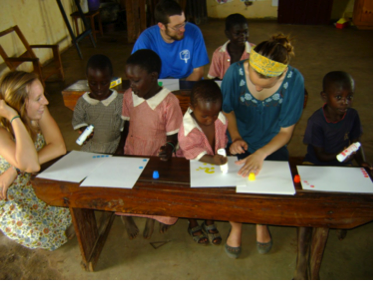
Educational Center Internship .
Write a short paragraph response to the following
questions: (1) What level of school (primary, secondary,
young adult) and type of school (basic education or
technical training) are you most interested in? Why? (2) In what
school, serving what student population, have you
secured a placement? (3) Have you met with a supervisor to draft
an Agreement? (4) What do you most look forward to learning within
that school setting? What are you most insecure about? Post
and comment. Be ready for a discussion on VSee
Now go to the
next forum week 4 and complete it. From now on forum in this class
will come before class as a basis for class discussion
Educational Theorists
Add you link to the best article on 1-3 theorists in this google doc
|
|
 Week 4: Private or Public Schools 0 unread Topic Settings | Week 4: Private or Public Schools 0 unread Topic Settings |  View Full Description View Full Description  Hide Full Description Hide Full Description 
Private or Public Schools for the Poor?
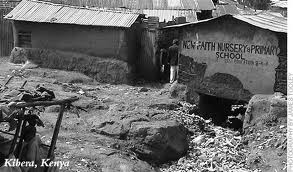 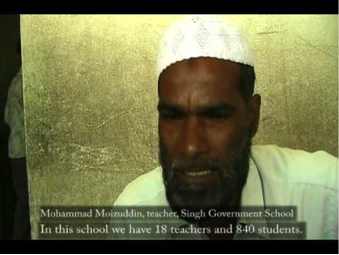
Over the last few decades, the
accepted wisdom throughout the developing world has been that
private schools are for rich people and everyone else, especially
the rural and urban poor, are to be educated within public
(government-sponsored) schools. More recent research conducted by
scholars like Justin Sandefur, James Tooley, and Pauline Dixon
have begun to challenge this orthodoxy. They have discovered that
poor people have remarkably innovative ways of helping themselves,
and in some of the most destitute places on Earth. For the next
3 weeks, we will immerse ourselves in this debate. We
will assess the benefits and drawbacks of both models in relation
to parent/student motivation, cost, instructional quality, and
learning productivity (achievement). Our reading and video
viewing, in tandem with our practical training (internship),
prepares us to compose an analytic report (Project 2) that
conceptually “frames” the ethnographic research that will follow
(Project 3).
Discussion #4: Private or Public Schools for the Poor?
Most developing countries provide
public education at the elementary and high school levels. Such
schools enroll approximately 90 percent of primary and 70 percent
of secondary school students, and are free, or almost free. But
increased demand and reduced public sector funding has produced a
situation where private schools have proliferated in urban poor
communities. Should countries relax restrictions on establishing
or expanding private schools? Should governments provide loans to
private schools, and restrict the number of available places in
public schools? Would doing so generate more resources for
education, and also lead to greater efficiency and improved
quality? Since private schools compete for students, and are
accountable to parents who pay the bills, would state support for
private schools incentivize schools to adopt teaching practices
and use staff and educational materials effectively and
economically?
These are some of the “policy”
questions being debated today, and the assigned readings on the
topic should at least enable you to venture a very tentative
opinion as a way to “prime the pump” for Project #2. (1)
Read and view the assigned materials. (2) Then
write a two-paragraph (minimum) response to the following
question based on your reading, viewing, and personal experience:
Would a high school student, selected at random from a
general student population in a slum community, do better in a
public or private school? Be sure to support your response
with empirical evidence drawn from the assigned materials.
Post and comment no later than Thursday at 6 am PST
OR respond to the following two paragraphs:
This leads to issues of ownership,
accountability, and motivation to train children. What is the
relationship of the church-plant and the emergence of schools in a
slum? What are the benefits of such a synergy? what are the
synergies? What are the dangers?
What then is the
role of external funding, given that internal financial mechanisms
hold principals and teachers in private slum schools accountable?
I many times hear Westerners gravely concerned about corruption
and non-accountability among the poor. I cringe because I rarely
see it. Instead I see workers seeking resources to maximize what
they are doing, and sacrificing at all points to do so. The
corruption tends to be at larger levels or with non-believers.
Should we not seek to resource externally because of this concern?
How do we mitigate it and how do we process such relationships?
|
|
 Week 6: Urban Poor School Administration 0 unread Topic Settings | Week 6: Urban Poor School Administration 0 unread Topic Settings |  View Full Description View Full Description  Hide Full Description Hide Full Description 
Week 6: School Administration & Environment
This discussion will be
accomplished in the forum then become the basis for a face to face
Vsee discussion, so have a page of bullet points you can share, as
in other MATUL courses.
School Administration
The video and written profiles
below document the remarkable diversity of schools types serving
urban poor populations. As your internship is under way, dedicate
several hours of reading and viewing in order to appreciate the
creative ways education is being made accessible, affordable, and
relevant to slum dwellers. Take notes on (1) physical setting, (2)
student population, (3) leadership, (4) curriculum, and (5)
pedagogy, perhaps by organizing a table of some kind. You can then
draw on that information to produce your Educational Center
Internship report .
(Forum and VSee call): School
Administration & Environment
During this week’s VSee call, we
will check in regarding our various internship experiences, and
discuss some of the elements of school cultures within slum
communities (e.g. physical setting, student populations,
leadership, curriculum, pedagogy).
- What are the critical elements of the physical
setting and what seem not essential and adaptive to poverty
levels?
-
Student populations: How many of the students are from
the slums, how many are dependent on scholarships, how many are
middle class paying fees?
-
Where does the curriculum
come from? how significant is it for the
teachers?
-
Pedagogy: Who trains the teachers and how? What are
essential elements of style? of control? How does it relate to
the urban poor context.
|
|
 Week 9: Intro to Ethnography: 0 unread Topic Settings | Week 9: Intro to Ethnography: 0 unread Topic Settings |  View Full Description View Full Description  Hide Full Description Hide Full Description 
Discussion #5
TOPIC 5. Inside Slum Schools Producing a School
Ethnography
[Weeks 9, 10, 11, 12]
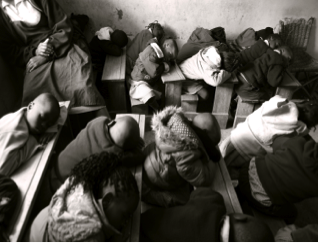 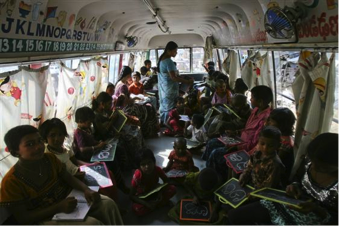
In Project #2, we
asked how a high-quality (creative, relevant) and affordable
education might be made available to children and adolescents
resident in the world’s slums. But the unpleasant fact is that
high-quality opportunities rarely translate into full
enrollments. As UNESCO discovered through its program
Education for All, educational systems can provide free, universal
access to primary schooling, temporarily increasing school
enrollments, sometimes quite dramatically, only to see many children
drop out before finishing school. Why don’t these kids persist?
What factors influence whether or not slum-based parents continue
to send their children to school?
Many locate the problem inside slum schools. Foreign
visitors are especially shocked at the conditions of schools across
the developing world, with many lacking the most basic equipment and
school supplies—textbooks, blackboards, desks, benches, and
sometimes even classrooms. Trained teachers are often unavailable,
especially in remote rural areas. Shortages of teachers and school
buildings result in double shifts or very large class sizes (upwards
of 70 students). Teachers who are “present” often have weak
incentives and little supervision. Consequently, absenteeism and
“time off task” run high. Like in India where government teachers
are absent 25 percent of days and teaching less than 55 percent of
the time. And these are just the
school-based problems. Other factors—rooted in family,
culture, and community—make the provision of quality, affordable
education one of the great human development challenges of the
21st century. Project #3 explores these dynamics through
structured observation and interviewing in slum-based schools. The
goal is to comprehend the complex set of factors that underlie
educational center development in urban poor communities throughout
the world.
Discussion #5
(Adobe Connect call): Producing a School Ethnography
During this week’s Adobe Connect call, we
will again check in regarding our internships. Then we will review
the expectations and procedure below for completing Project 3.
Special emphasis will be given to analyzing the factors affecting
the relative efficiency of public and private schools.
Project 3: School Ethnography
Over the past 50 years, ethnographic
research has helped us understand how schools operate in culture and
society. It has created a basis for critiquing purely behaviouristic
(psychological) explanations of teaching and learning by widening
the framework of data collection and analysis to include family,
community, and organizational (sociocultural) factors. Our limited
ethnography (Project 3) will be the product of a questioning
process, informed by experience in the field (internship) and
knowledge of issues (course-related reading and video-viewing).
Through the internship, you will have learned to observe and ask
questions as a means of serving with certain contextual
understandings. Now, during the ethnographic research phase, you
will use a more explicit set of questions as an idea base from which
to comprehend various educational processes in two different types
of schools.
Procedure
1. Identify two (2) schools serving
slum-resident children or adolescents—one private and the
other public. (One of the two schools can be the slum school
where you are interning.) 2.
Conduct a series of broad, “big picture” observations on 8
dimensions of organizational life (below). Take detailed notes.
Convert these notes into a rich description (approx. 3 pages
for each school). § Space:
the physical plant § Actors: the people
involved as students, teachers, administrators, parents, volunteers,
etc. § Activities: the typical set of related
acts that school actors do § Objects: the
physical things which are present in the setting for educational
purposes § Acts: single acts that people do that
have special meaning § Events: a set of
related activities that people carry out (e.g. a “lesson”)
§ Goals: the main things people are trying to
accomplish § Feeling: the emotions that are felt
and expressed by actors 3. Conduct
semi-formal interviews with school leaders and either
teachers or parents.
School leaders § Collect information related
to the following questions: (1) When and how was the school founded?
[Probe for the steps taken to develop an educational center—from
original vision to actual student enrollment. What were the
political, financial, and human resource (finding competent leaders
and teachers) obstacles?] (2) How did they overcome the many forces
that discourage schooling among slum children (see readings)? (3) Is
their primary goal to improve school attendance (increase #
of students) or to improve school quality? What strategies do they
have in place to make progress in either area? In particular, what
indicators do they use to track improvements in school
quality? Teachers or
parents § Arrange interviews with at least 2
teachers or parents from each school. (1) Ask teachers/parents at
the private school: Why are parents willing to make a
considerable financial sacrifice (i.e. pay fees) when “free”
public schools are available? (2) Ask teachers/parents at the
public school: What are the main reasons children enroll
in public schools rather than private schools?
4. Analyze the observational and interview
data for the key factors—individual, family, cultural, community,
and school—that explain (a) school participation and (b) learning
productivity (academic quality) in both the private and public
school. (The table below can help you mentally organize the data.)
Include references to the articles (see “Preparation”) that explain
why many slum parents and kids make a rational choice not to
attend school. 5. Write a 7-8
page, single spaced report of your observational and interview data.
Organize the report into three sections: (a) Introduction:
overview of slum community and research methods used to collect
data. (b) Description of the 8 dimensions of organizational
life for each school. (c) Analysis of the factors that
facilitate and/or impede the access of urban poor kids to a quality
education, and what could be done in order for a high-quality
education to be broadly available to them. Give the report a title.
Include sub-heads and page #s. Spell- and grammar-check prior to
submission. 6. [Required step]
Present a copy of the report to the lead administrator at each of
the two schools. Ask them to correct any inaccurate data and suggest
any revisions (additions, deletions) that would strengthen the
report. Schedule a meeting to review the recommendations and to
discuss related issues. Revise the report based on this feedback.
. Factors affecting the
relative efficiency of public and private schools
| Factors |
Private |
Public | | Individual
Factors - Gender of
student - Caste background of
student/family - Student’s
motivation |
|
| | Family Factors
- Family size
- Household income -
Parents’ educational level -
Parents’ educational aspirations
|
| |
|
Cultural Factors -
Parental fear of harassment and abuse (female
students) |
|
| | Community Factors
- Environmental conditions
- Job opportunity structure
- Transport access to schools
- Peer effects
|
| |
|
School Factors -
School admission procedures -
Cost of tuition and uniforms -
Medium of instruction -
Overcrowding (pupil-teacher ratios)
- Infrastructure: lack of piped water; lack of
toilets for girls; - Teachers:
lack of female teachers; high rates of teacher lateness and
absenteeism; teacher behavior
- Availability of instructional aids and
materials - Incentives: e.g.
mid-day meals, - Classroom
pedagogy |
|
|
Forum Discussion: As a class seek to improve on this form
(this week) and the process (next three weeks).
Alternative approach: Use the free GanttProject software off the web,
and develop a gannt fow chart process of setting up a slum school.
Involve several people in your discussion either those with expertise,
or local parents who might want to implement this idea in setting up a
new school, plus the teachers you are working alongside. Make sure
you get the major issues in there, like logistics, administration,
resourcing, cash flow, teacher recruitment and training, student
recruitment etc. Plus items that answer the issues above.
essentially follow the process above but focus it on intiiation of a
new school.
|
|
|
|
 Week 11: Financial Viability 0 unread Topic Settings | Week 11: Financial Viability 0 unread Topic Settings |  View Full Description View Full Description  Hide Full Description Hide Full Description Starting any business venture involves an ongoing progression of hard financial decisions. There are simple tools that can be used for both the preplanning and ongoing management of a slum school. Come back next class with answers to these questions.
- How familiar are you with cash flows, balance sheets and income/expenditure sheets? See if you can review the yearly financial statements of the school over the last three years. What questions does this generate?
- What are the critical elements in terms of cash flows in a school (e.g. when is there lots of money and what time of the year is there no money?
- How do private schools differ to public schools in this?
- What level of reserves does your school try to keep set aside?
- What level of school fees makes the school viable?
- What level of salary levels makes the school viable?
- Who makes these decisions?
- How does the board hold the principal accountable?
- How does the principal supervice the CFO?
- What checks and balances are there in terms of spending allowances? What freedoms are there to spend?
- How does the school make sure there are capital resources for new buildings?
- What is its policy in terms of debt?
- How does the school district control these issues?
- Does the department of education have a set of strict guidelines to follow to get a school set up? Do they work?
- Do the private schools also follow them?
- How does the school cope with the very poor?
- Who makes decisions and how about scholarships?
|
|
|
|
 Week 13: Gender Equality 0 unread Topic Settings | Week 13: Gender Equality 0 unread Topic Settings |  View Full Description View Full Description  Hide Full Description Hide Full Description 
If there is one conviction that most development activists share, it is this: Gender equity is the biggest moral challenge facing the international community today, and girls’ education is the single most cost-effective instrument for achieving it. Increasing female participation in schools is not only cheap; it opens minds, gives girls new career opportunities and ways to generate cash, leads them to have fewer children and invest more in those children, and it tends to bring women from the shadows into the formal economy and society. While no panacea, educating girls probably has a greater transformative effect on a country than anything else one can do. Preparations § Read: Maureen Lewis and Marlaine Lockheed. “Overview” (p. 1-17) in Inexcusable Absence: Why 60 million girls are still out of school and what to do about it. Washington, DC: Brookings Institute and the Center for Global Development. http://www.cgdev.org/content/publications/detail/11898/ After digesting the readings and video clips for this week, write a two-paragraph (minimum) response to this question: Drawing from the week’s materials and your own experience, what factors restrain urban poor girls, along with their mothers, from fully participating in local educational centers, whether at the primary, secondary, technical levels? |
|
|